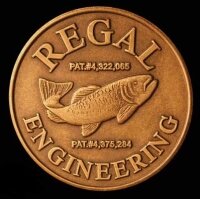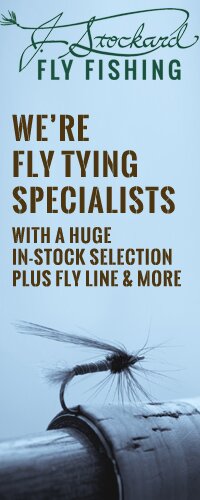 Pat Barnes was a fly fishing legend that owned a fly shop in West Yellowstone, Montana. Being a history buff, I’ve studied quite a bit of the life of Mr. Barnes and have luckily been able to talk to his son, Charles, via e-mail. One of the items Charles sent me was a paper bag that Pat had written fly tying tips on. I’ve posted one image of it here. I’ve read through it and deciphered as much as I can. There were a few words that I couldn’t quite read, but I was able to type out most of it. I thought it would be interesting to post it here. So below you can read some tying tidbits from one of the best.
Pat Barnes was a fly fishing legend that owned a fly shop in West Yellowstone, Montana. Being a history buff, I’ve studied quite a bit of the life of Mr. Barnes and have luckily been able to talk to his son, Charles, via e-mail. One of the items Charles sent me was a paper bag that Pat had written fly tying tips on. I’ve posted one image of it here. I’ve read through it and deciphered as much as I can. There were a few words that I couldn’t quite read, but I was able to type out most of it. I thought it would be interesting to post it here. So below you can read some tying tidbits from one of the best.
Tips on Fly Tying
1. Flies are best if they are as durable as possible.
Durability depends on strength of each of the materials used.
Strive always to get on your flies:
1. The stiffest tail material.
2. the most durable body, stiffest hackle, most durable —- material. To insure that all materials stay put use the largest (strongest) winding silk possible for the size of the fly, for the material that you are tying on. Example: To tie the deer hair on the head of a #4-6-8 even 10-12 Muddler use size 17? thead or stronger. For a #18 Adams, the dubbed body as as all else would call for a good quality #.0950 thread or possibly smaller if you are tying the fly on an extremely fine wire hook.
You soon learn the relative strength of material as you work with them.
For example: 1 strand of most peacock herl withstand little pressure. By putting on two or 3 strands winding them together carefully then one —- them with the appropriate color winding silk make a much more durable body (tied faster) for a dry grey hackle than a single strand would by itself with no overwind.
2. The most often asked question of a person watching a fly tier tie the flies is “How fast can you make one?” It is quite obvious from the question that to most people speed is equated with skill, regardless of quality. Because speed is important to the commercial tier, assuming there is no loss of quality. It is important that a tier do those having in his operation that will increase his speed. Take two fly tiers working on a dozen flies with 4 operations, tail, body, wing, hackle. One tier finishes first. Why? Better organization of actions needed. The actions involving the 4 operations are picking up, laying down materials, scissors. —- hands are needed to pick up and clip —- material. If you think thru this operation you might suggest better. 4 to tie it on, some one else might use 6. The difference would be whether the tail material could be cut off touching only the fibers needed rather than picking up the pieces of materials from which the tail material were cut.
Lets go back one step. How many operations are needed to cut off a piece of winding silk. Do you pick up the spool, unspool the needed length, reach for the scissors, cut it off, lay down the scissors then start it on the hook? Lets see thats 6 operations to get the silk on the hook. It can be done in 4 assuming that the spool is tied down, that the thread if fed through a slit when it can be grasped easily (operation 1) cut with scissors (Pick up and cut – 2 and 3), —- thru the hook 4.
why not the same procedure for body – no unnessory operations.
The number of operations needed for —- —- vary tremendously due to type and kind of —- put on but if you follow the principle of tying duration in some way each materials that you use be it tail, body, wing, hackle, winding silk, bottle or dropper you are going to cut down on your fly tying time on each fly.
3. Keep materials in close to save reaching time. Materials can be on three levels, in front of you, two sides, below your vise, on your lap, each knee. I suggest wearing an apron and make use of chest and lower pocket.
4. Tips on use of scissors
1. Do major cutting and clipping of fur and hair first
2. Keep them in your hand if possible all the time or the closest thing at hand
3. Have more than one pair of scissors, one for —- stuff, one for —- —–
4. Keep them sharp. A small triangle —- is one of the necessary tools on my table.
5. Do all cutting and trimming before lacquering head. a good pair of scissors for bucktail, squirrel tail is hardly adoptable for the close trimming of a #16 or 18.














